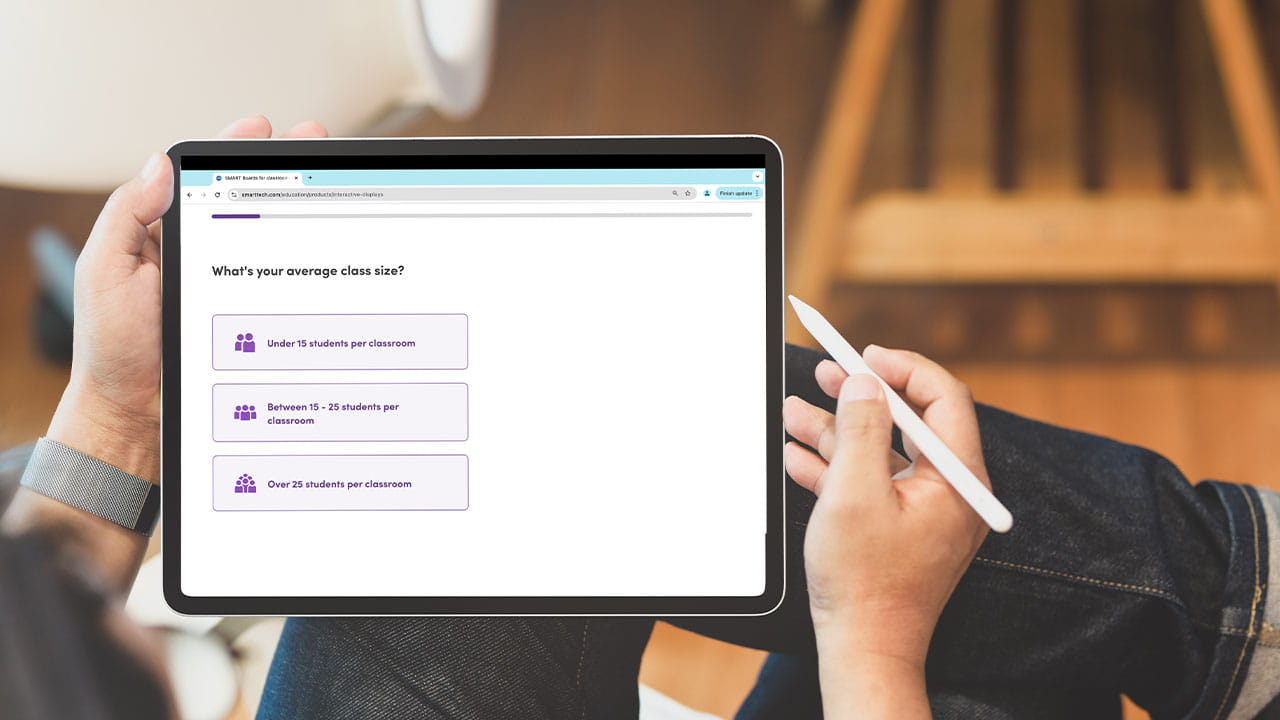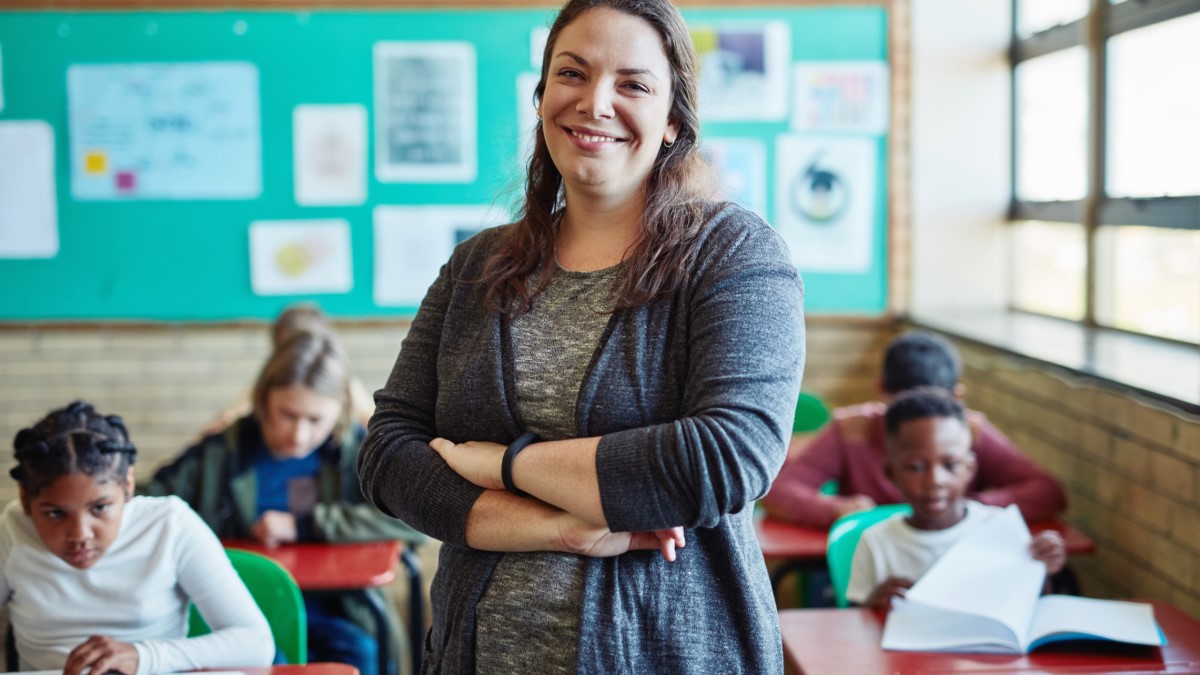Teachers who work with students with special needs play a critical role in their schools. Anyone who chooses this path needs to learn not only how to become an accessibility advocate, but also how their role impacts their school community.
“On one hand, I’m like a regular teacher where I’m working directly with the kids,” says Kate Fergusson, Special Education Teacher with the Upper Canada School Board. “At the same time, my job is almost like a coach to the other teachers while we discuss student needs and how best to support them in the classroom.”
Inclusive learning means welcoming all kids into the classroom to learn in ways that are appropriate for their abilities. Creating these experiences is done by experienced, committed teachers with a particular understanding of how to meet the diverse needs in a typical classroom.
In this article on special education teachers, we’ll explore:
- The impacts of special education teachers in schools
- How accessibility teachers can use technology in the classroom
- Effective classroom tools that support inclusive access
- Advice on how to become an accessibility advocate
Critical impacts of special education teachers in schools
Accessibility teachers go by many different names, depending on the scope of their role and where they work. These specialized professionals may use titles such as special education teachers, resource teachers, or accessibility teachers.
What they have in common, however, is their impact on their schools and the students and families they support.
“I work with formal processes such as IEPs and identification, placement, and review to ensure that kids’ needs are correctly identified, along with their strengths, and where they should be placed in the school setting,” says Fergusson.
Accessibility teachers facilitate support on every level, bridging gaps in learning experiences and acting as a communication hub for other teachers and family members. They may liaise with other professionals, such as occupational, physical, or speech therapists, creating a community support network.
How accessibility teachers can use technology in the classroom
It’s easiest for teachers to welcome technology when it helps them develop better learning experiences and opens access for more students.
“Whenever technology makes it easier for a classroom teacher to support the kids, there’s immediate buy-in,” says Fergusson.
The right tools and technology can lower barriers to learning, allowing students with diverse needs to participate in lessons and interact with teachers and other students. Using technology to create inclusion benefits everyone in the classroom, positively impacting students, peers, and teachers.
An accessibility teacher or coach can help build success by supporting implementation, ensuring teachers are comfortable with new tech, and navigating tools and equipment. They may help develop programming and customize lessons to help students contribute in whatever way they can.
Effective classroom tools that support inclusive environments
Technology that supports mostly non-verbal students can create meaningful experiences that completely change how they experience learning. Special education teachers find creative ways to incorporate these tools in the classroom to make learning more accessible for every student.
One of these valuable classroom tools is Lumio, a digital learning tool that transforms lessons into interactive learning experiences.
“My kids are mostly non-verbal, and Lumio has been incredible,” says Fergusson. “The engagement has been incredible. The kids found it totally intuitive and now can’t wait to participate.”
Another excellent platform is Tool Explorer, available on the SMART Board RX series, allowing teachers and students to manipulate real-world objects to interact with digital content.
“Fine motor skills are challenging for all my kids,” says Fergusson. “Holding a pencil on paper to write their name can create a huge challenge. Yet, with the SMART Board, they all want to go up and draw and write their name.”
The benefits of technology in a special education classroom go beyond student engagement and participation. Equally vital is the ability to gain a reliable representation of student abilities. Without tools and technology that unlock access for these students, many of their strengths and capabilities can go unnoticed.
When students can use a variety of methods to demonstrate their knowledge, teachers can better evaluate their understanding and develop programming to help them continue to progress.
How to become an accessibility advocate? (and why it’s so rewarding)
Teachers are devoted to the education and development of their students, and many spend decades helping kids discover their unique talents.
An accessibility teacher will make that same commitment while taking on additional challenges. The reward is creating impactful learning experiences for all students in every classroom, no matter their abilities or backgrounds.
Here are the two biggest likely steps for anyone wanting to become an accessibility advocate:
- Take special education training in addition to your teaching degree, you’ll need to take courses focusing on special education and accessibility to gain knowledge of learning disorders, disabilities, and diagnoses. This step will ensure you’re well-equipped to work with students with diverse needs and backgrounds.
Most educators who want to become accessibility teachers will require this specialized training. However, the details and educational requirements will differ depending on the province or school board they work in. - Adapt and learn every day on the job
While it’s imperative to have education and training to support students with diverse needs, you’ll quickly learn that every child is different.
“Every year, you could be presented with what feels like the same kids and even the same diagnoses,” says Fergusson. “And it’s a totally different ballgame.”
The learning is ongoing for special education teachers, with inspiration and ideas coming from all directions. You’ll constantly find new ways to navigate challenges and create connections with each student.
Working as an accessibility teacher or in a special education classroom can be very appealing for educators looking to uniquely impact their students and school communities. While never easy, the variety of challenges can keep teachers adapting and learning new things throughout their careers.
Exploring new technology and tools can often ease pressure on these educators, allowing them to focus on their students. Staying on top of the latest developments can help special education teachers create inclusive environments that welcome all students.
Curious about how these tools can help all teachers connect with students with diverse needs? Experience Lumio for yourself and see how accessible tools can support meaningful learning experiences in your classroom.



